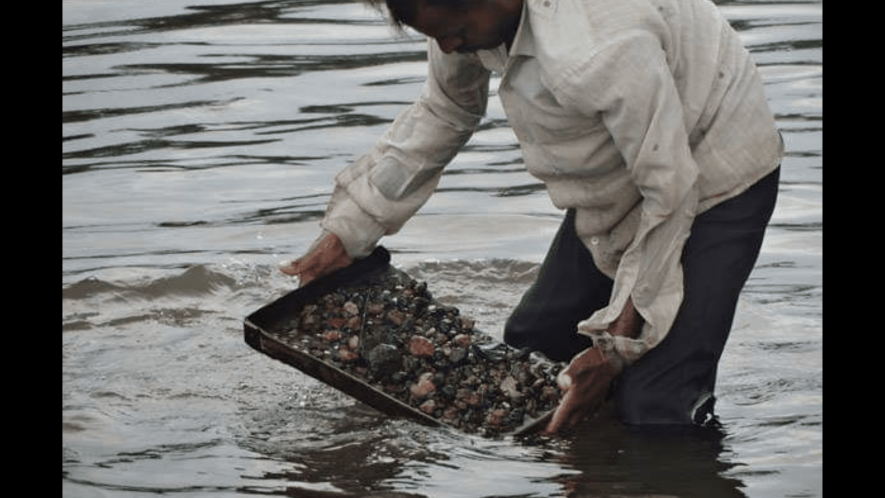Two Damaging Choices: Centre Picks Water Over Diamonds in MP

Representational Image. Image Courtesy: Facebook
New Delhi: An allegedly ill-conceived river interlinking government project has sidelined an equally controversial diamond mining project in Madhya Pradesh.
A Central government expert review panel has recommended that the Aditya Birla Group’s ambitious diamond mining project in Chhatarpur district be kept in abeyance till the plan to link Ken and Betwa rivers in water-starved Bundelkhand, criticised as an ecologically disastrous exercise, is finalised.
In a meeting held on December 27, 2022, the Forest Advisory Committee (FAC) of the Union ministry of environment, forest and climate change (MoEF&CC) rejected a proposal to divert 382.131 hectares of forestland to the Bunder Diamond Mining Project on the grounds that it will potentially affect the Panna Tiger Reserve. Shockingly, the tiger reserve itself is predicted to get submerged once the Ken-Betwa Link Project takes shape.
Several potential adverse environmental impacts of the mining project were listed by the FAC at the meeting. “The FAC observed that the instant project can potentially disrupt the landscape character vis-a-vis the tiger dispersal around the Panna landscape. Further, the instant proposal may be considered only when the Ken-Betwa River Interlinking Project is finalised, the tiger dispersal in the area post-construction of the Ken-Betwa Link Project is studied and a detailed study is done to assess other alternatives,” the minutes of the meeting state.
The recommendation of the expert panel to scout for alternatives vis-à-vis the diamond mining project comes at a time when the Centre itself has been alleged to have considered no alternatives other than interlinking the two peninsular rivers to ensure water availability in Bundelkhand.
In a report submitted in August 2019, a Central Empowered Committee (CEC) appointed by the Supreme Court had
recommended that alternatives for ensuring water to Bundelkhand should be considered by the Centre before going ahead with the river interlinking project.
Incidentally, the top court is yet to take cognisance of the CEC report more than three years after it was submitted even as the Narendra Modi government has pulled out all stops to go ahead with the project.
The CEC, after conducting a detailed study and extensive field visits, had specifically mentioned in the report “that the project authorities have not examined the alternatives available to meet the specific objectives of the project”.
As per the government, the project has been envisaged to fetch excess water from the upper reaches of the Ken River and divert it downstream to the Betwa River through the construction of a dam in Daudhan that will solve the irrigation and potable water needs of Bundelkhand. However, this premise has been labelled as fallacious and ill-conceived by activists.
“The report of the Ken-Betwa Link Project has not taken cognisance of the fact that till around 50 years ago, Bundelkhand was never a water-starved area. The region receives adequate rainfall and local communities used to depend on traditional methods of water harvesting like small ponds and tanks,” Himanshu Thakkar, of the South Asian Network on Dams, Rivers and People, told Newsclick.
These small-scale water harvesting systems were “neglected systematically over decades. Large-scale and widespread mining started destroying water bodies, forests and the environment in the process”, he further said.
“The CEC has rightly pointed out that alternative methods of water conservation were never considered before going ahead with this large-scale project. Rainwater harvesting systems, both for surface water storage and groundwater recharge, watershed development, and revival of traditional ponds and tanks could be considered viable alternatives apart from reducing dependence on water-intensive crops like paddy,” Thakkar added.
The government not only allocated Rs 1,400 crore for the project in the 2022-23 Budget but also constituted an executive body called the Ken-Betwa Link Project Authority to execute it.
In March 2022, the minister of state for Jal Shakti, Bishweswar Tudu informed the Rajya Sabha through a written reply that the CEC concerns regarding the project’s adverse impacts on the ecology of the tiger reserve have already been responded to by National Water Development Agency, the nodal agency under the Jal Shakti ministry, which is executing the project.
The government also formed a 20-member national steering committee in February 2022 to see through the various stages of implementation of the project. On January 18, at a meeting held under the aegis of the Jal Shakti ministry in New Delhi—the steering committee was informed that orders had been issued by the BJP-led Madhya Pradesh government to transfer around 5,480 hectares of non-forest government land in Panna and Chhattarpur districts for compensatory afforestation.
It is not yet known whether the 5,480 hectares is a contiguous parcel or comprises fragmented plots. As per reports, the Jal Shakti ministry had earlier sought relaxation from the FAC regarding conditions pertaining to compensatory afforestation owing to the fact that a contiguous parcel of land was not readily available with the state government.
Nevertheless, activists argue that the very manner in which forestland has been diverted from the tiger reserve for the project is grossly violative of wildlife preservation laws.
“It has been clearly pointed out by the CEC that the Central government provided wildlife clearance to the project in gross violation of laws. The laws governing the protection of flora and fauna are based on the premise that our approach towards infrastructure development should be eco-centric and not anthropocentric,” river activist Manoj Misra, who heads the NGO Yamuna Jiye Abhiyaan, told Newsclick.
“Any diversion of land from a protected wildlife habitat can be allowed only if such diversion is necessary for better management of wildlife in the area,” he added.
As per Section 35 (6) of the Wildlife (Protection) Act, 1972, destruction or removal of any wildlife, the destruction, damage or diversion of the habitat of any wild animal and the diversion, stopping or enhancement of the flow of water into or outside a national park or sanctuary can only be permitted if it is found to be necessary for the improvement and better management of wildlife.
“Diversion of land from a protected wildlife habitat can be allowed for no other purpose. Wildlife clearance for the project was granted even though more than 5,800 hectares of the Panna Tiger Reserve will get submerged once the project takes shape,” Misra further added.
The Standing Committee of the National Board for Wildlife, another expert review panel under the MoEF&CC, had recommended wildlife clearance to the project in September 2016.
On the other hand, the Bunder diamond mining block was one of the controversial bids floated by the Kamal Nath-headed Congress government during its short stint. The block, allocated earlier to Rio Tinto, was abandoned by the Anglo-Australian mining conglomerate in 2016 with uncertainties looming large over forest clearance for the project.
When the bid for the block was floated afresh by the Nath government, top industrial houses of the country had made a beeline for acquiring it as a result of which the government-approved offset price of Rs 56,000 crore had increased by 11.5%.
Ironically, barely three months after awarding the block to Aditya Birla Group subsidiary Essel Mining & Industries Limited at the cost of other top industrial houses, Nath’s government was reduced to a minority due to the mass resignation of rebellious Congress MLAs and replaced by the BJP.
In May 2022, Newsclick reported how the Shivraj Singh Chouhan-headed BJP government was actively pushing for forest clearance for the diamond project. Shortly before the a tripartite agreement between the governments of Uttar Pradesh and Madhya Pradesh and the Jal Shakti ministry was signed in March 2021, Chouhan’s government had sought the MoEF&CC’s approval to clear 382.131 hectares of forestland for the project.
An email sent by Newsclick to Essel Mining & Industries asking about its plan of action on the diamond mining project now that the Centre has almost indefinitely postponed it till the completion of the river linking project didn’t receive a reply.
The writer is an independent journalist.
Get the latest reports & analysis with people's perspective on Protests, movements & deep analytical videos, discussions of the current affairs in your Telegram app. Subscribe to NewsClick's Telegram channel & get Real-Time updates on stories, as they get published on our website.
























